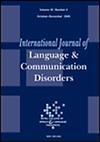Speech-Language Pathologists’ Experiences on Telepractice in Children With Autism Spectrum Disorder in India—A Qualitative Study
Abstract
Introduction
The present study aimed to understand the experiences of speech-language pathologists (SLPs) on the use of telepractice for children with Autism Spectrum Disorder (ASD) in India.
Method
Data were collected through in-depth interviews with 16 SLPs who were practising in India. The data were analyzed using an inductive thematic analysis approach, and the results revealed three major themes: Use of telepractice for children with ASD, clinician related factors influencing telepractice, child related factors influencing telepractice and respective sub-themes.
Results
The results of our study revealed key insights regarding the essential prerequisites and certain factors influencing telepractice for children with ASD. These include the development of comprehensive training courses for both clinicians and parents, addressing technical challenges to ensure seamless operation.
Conclusion
SLPs offered valuable suggestions for the future of telepractice and detailed its perceived advantages and disadvantages, thereby highlighting the significant benefits of telepractice for the majority of children with ASD, with advice on addressing the challenges encountered. Given the increasing demand for telepractice, there is a need to extend the findings of the study to health professionals working in varied settings and locations.
WHAT THIS PAPER ADDS
- It is known that telepractice is used increasingly to provide speech, language and communication services for a wide range of clients, including children. Recent reports suggest that SLPs in India are using telepractice services for service delivery in children with language impairments, including autism spectrum disorder.
- The findings of the present study shed light on the SLPs’ views on the use of telepractice in ASD based on their experience. The study also informs about the SLPs' current use of telepractice for service delivery, various clinician and child related factors relevant to telepractice, particularly in children with ASD in India. The results also present the scope of telepractice, challenges and future needs of this service delivery method specific to the Indian context. These findings are the first of their kind, given the increasing use of telepractice for children with ASD in India.
- The findings of the study offer several implications of telepractice use in the field of speech language pathology. These implications range from providing infrastructure, facilities, standardized tools, dedicated customized applications, training and imparting education for SLPs in telepractice. Findings of the study also highlight the need for further research in this area to advance knowledge and the evidence base.

 求助内容:
求助内容: 应助结果提醒方式:
应助结果提醒方式:


